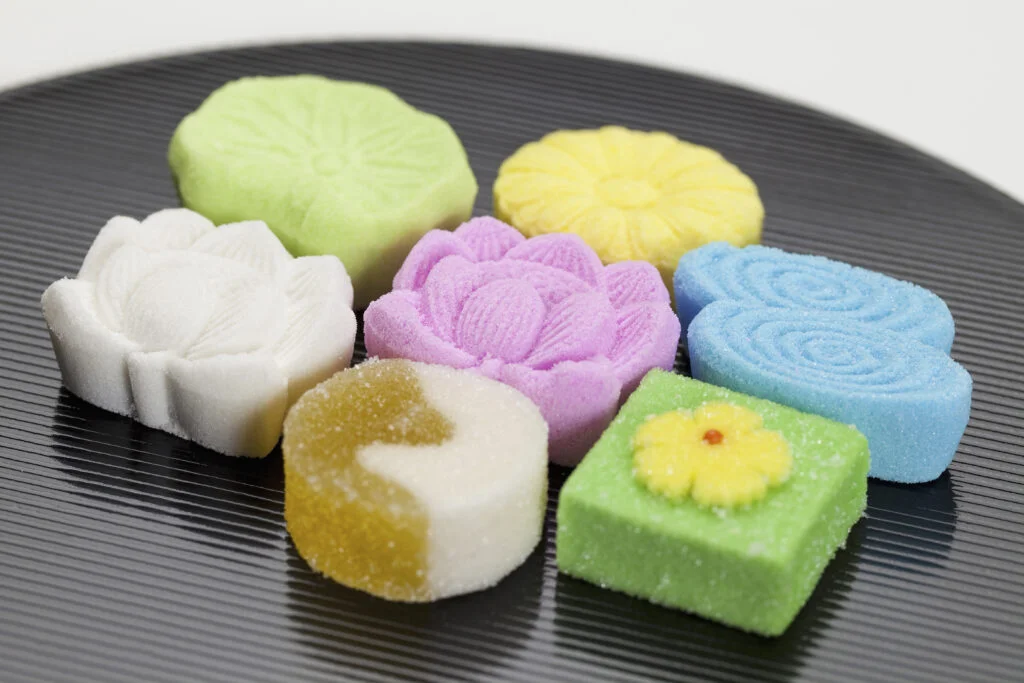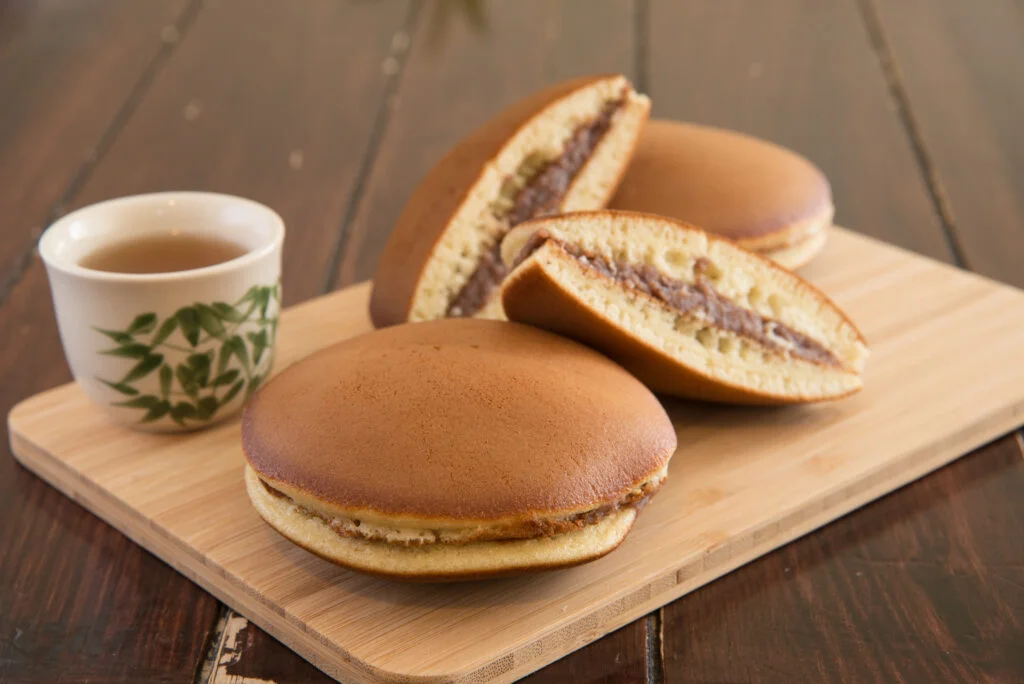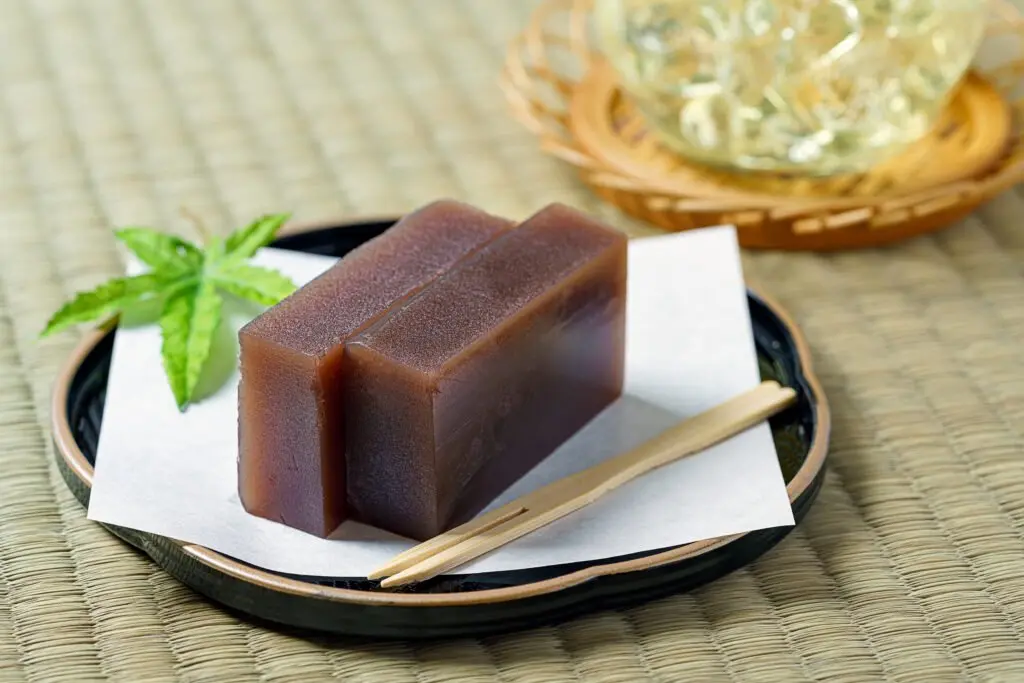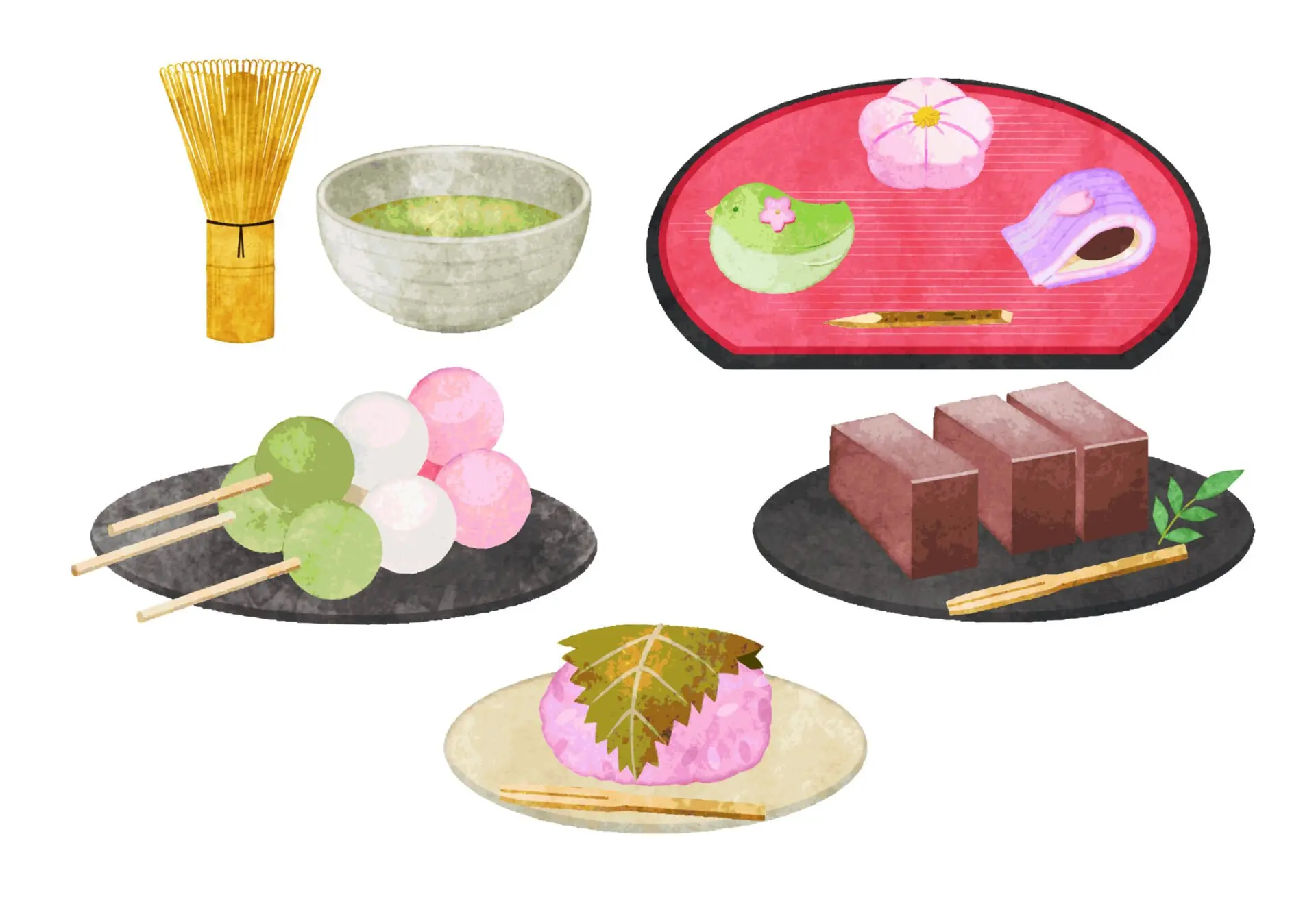Exploring Wagashi: The Three Main Categories of Japanese Sweets and Desserts
Wagashi, traditional Japanese sweets, are renowned for their diversity and artistry. In this article, we’ll explore the basic classifications of wagashi and delve into the representative types within each category.
Understanding the Three Main Categories of Wagashi
According to the official website of the Japan Wagashi Association, wagashi are primarily classified into three categories based on their moisture content:
1. Higashi (Dry Confections) Moisture content: 10% or less Characteristics: Low moisture content, high preservability Approximate shelf life: 1-3 months
2. Hannamagashi (Semi-fresh Confections) Moisture content: 10-30% Characteristics: Moist texture with moderate preservability Approximate shelf life: 1-2 weeks
3. Namagashi (Fresh Confections) Moisture content: Over 30% Characteristics: High moisture content, fresh and juicy texture Approximate shelf life: 1-3 days
Let’s explore representative examples from each of these three categories.
1.Higashi: The Art of Dry Japanese Sweets

1.1 Rakugan Characteristics: A dry confection made by pressing a mixture of sugar and rice flour into molds. It has a unique texture that crumbles in the mouth and comes in various colors and shapes. Its refined sweetness pairs excellently with green tea. Origin: A staple in tea ceremonies, where rakugan of seasonal shapes and colors are chosen.
1.2 Okoshi Characteristics: A confection made by roasting rice, wheat, or sesame seeds and binding them with sugar. It has a crunchy texture and a sweet taste balanced with the flavor of the ingredients. It can be easily broken by hand for eating. Origin: The name comes from the word “to rise,” making it considered auspicious. It has been popular among common people since the Edo period.
1.3 Arare Characteristics: Made from steamed and dried mochi rice, cut into small pieces, and then either deep-fried or baked. It comes in various flavors such as salty, soy sauce, or sweet, and is known for its crispy texture. Origin: Named after its resemblance to hailstones (“arare” in Japanese). It’s also used in seasonal events like Setsubun and Hinamatsuri.
2.Hannamagashi: Semi-Fresh Japanese Desserts

2.1 Dorayaki Characteristics: A confection consisting of sweet red bean paste sandwiched between two thin, circular sponge cakes made from wheat flour, eggs, and sugar. It offers a harmonious blend of moist cake and moderately sweet bean paste. Origin: Said to be named after its resemblance to a gong (“dora” in Japanese). It took its current form in the early Showa period.
3.2 Monaka Characteristics: A confection with sweet bean paste sandwiched between thin, crispy wafers made from mochi rice. It’s known for the contrast between the crispy exterior and soft interior and comes in various shapes. Origin: The name is said to derive from the Buddhist term “monchaku.” It became popular in the late Edo period.
3.3 Castella Characteristics: A rectangular sponge cake made primarily from eggs, sugar, and wheat flour. It’s known for its moist texture and refined sweetness, with a slightly crispy surface. Origin: Introduced from Portugal and developed in Nagasaki. It has evolved uniquely to suit Japanese climate and food culture.
3. Namagashi: Fresh and Delicate Japanese Confections

3.1 Daifuku Mochi Characteristics: A soft mochi (made from sweet rice flour) wrapped around sweet bean paste. It offers a chewy texture perfectly balanced with the sweetness of the filling. Various types of bean paste are used, including chunky or smooth versions with different flavors. Origin: Named with the meaning “great luck.” It became popular in the late Edo period.
3.2 Yokan Characteristics: A thick, jellied dessert made by cooking sweet bean paste, sugar, and agar. It’s known for its smooth texture and rich red bean flavor. In summer, the agar content is often increased for a cooler sensation. Origin: Originally a Chinese mutton soup, it evolved into a sweet in Japan. Introduced in the Muromachi period, it took its current form in the Edo period.
3.3 Nerikiri Characteristics: An artistic fresh confection made by kneading white bean paste with mochi flour, coloring it, and shaping it to represent seasonal flowers or scenery. It’s known for its delicate craftsmanship, visual beauty, and refined sweetness. Origin: Refined alongside the development of tea ceremony. It’s highly valued in tea gatherings for its ability to express seasonality.
Seasonal Wagashi: Japanese Sweets that Celebrate Nature’s Rhythm
Wagashi are deeply connected to the changing seasons and annual events. Each season has its characteristic wagashi:
- Spring: Sakura Mochi, Kashiwa Mochi
- Summer: Mizu Yokan, Kuzukiri
- Autumn: Kurikinton, Tsukimi Dango
- Winter: Kanoko, Kinako Mochi
Conclusion:
The world of wagashi offers a fascinating journey through Japanese culinary artistry. From the dry, long-lasting higashi to the fresh, seasonal namagashi, these Japanese sweets and desserts embody centuries of tradition and craftsmanship. As you explore the diverse categories of wagashi, you’ll discover not just delightful flavors, but also a deeper appreciation for Japanese culture and its connection to nature’s rhythms.

[…] > More details […]